


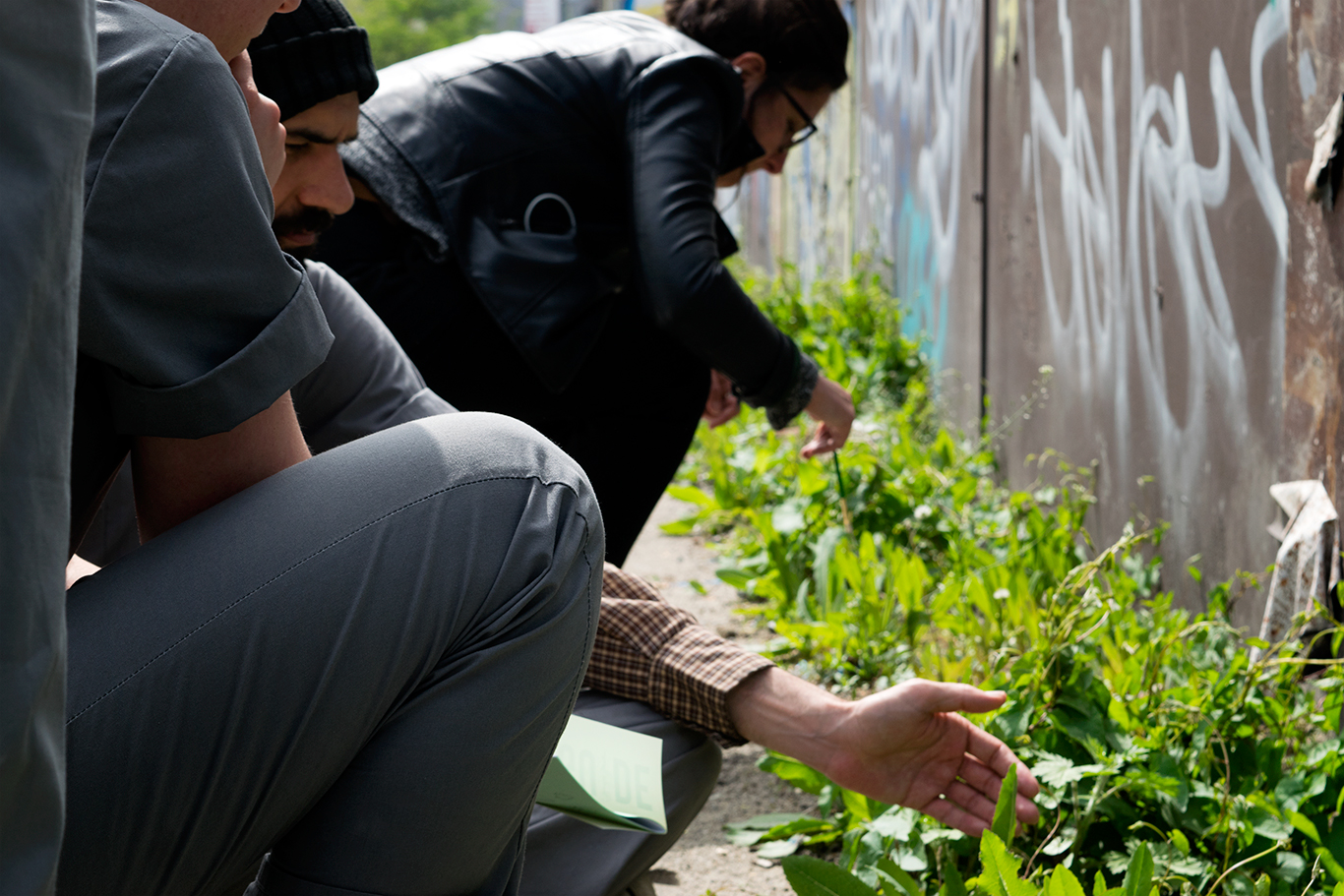
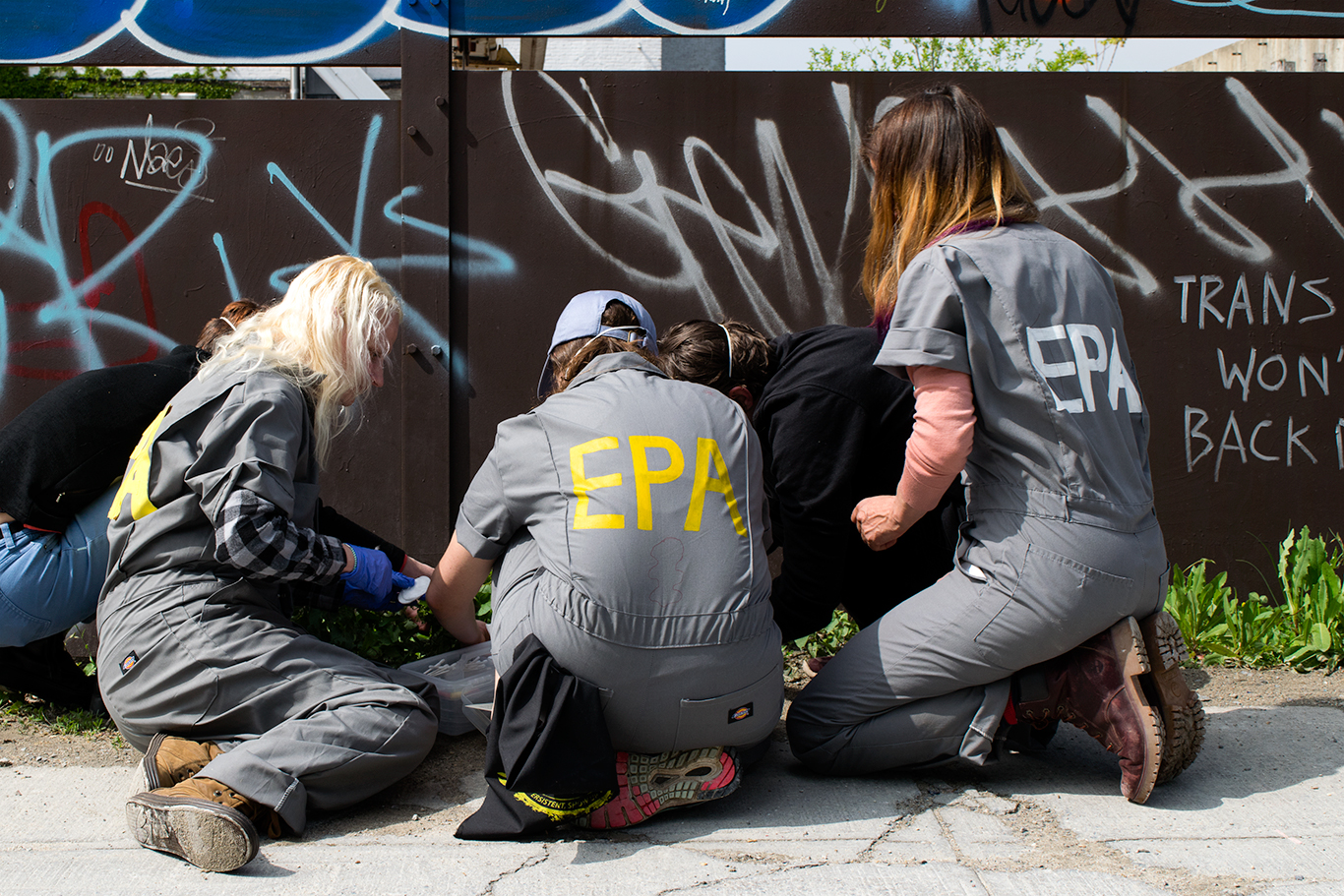

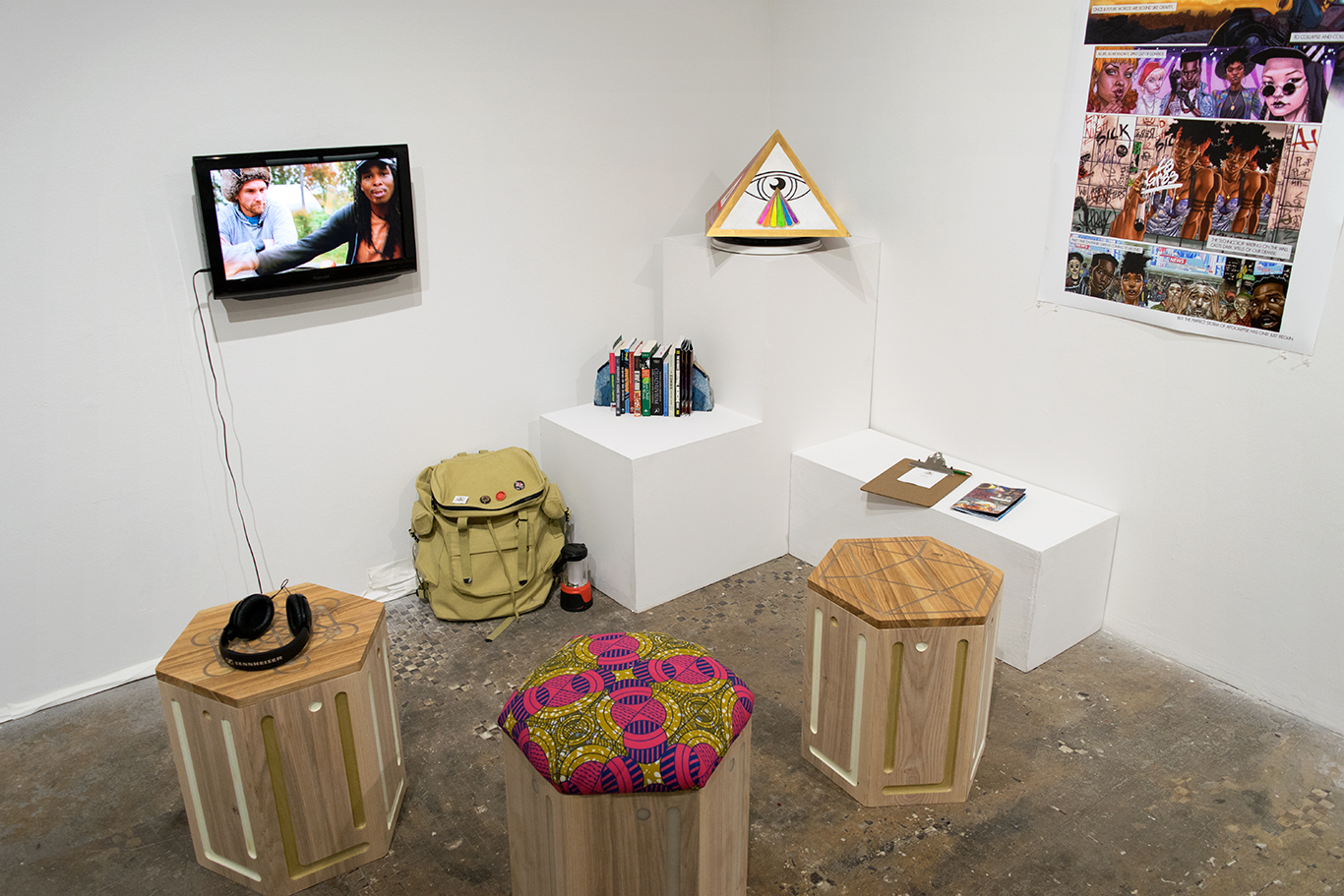
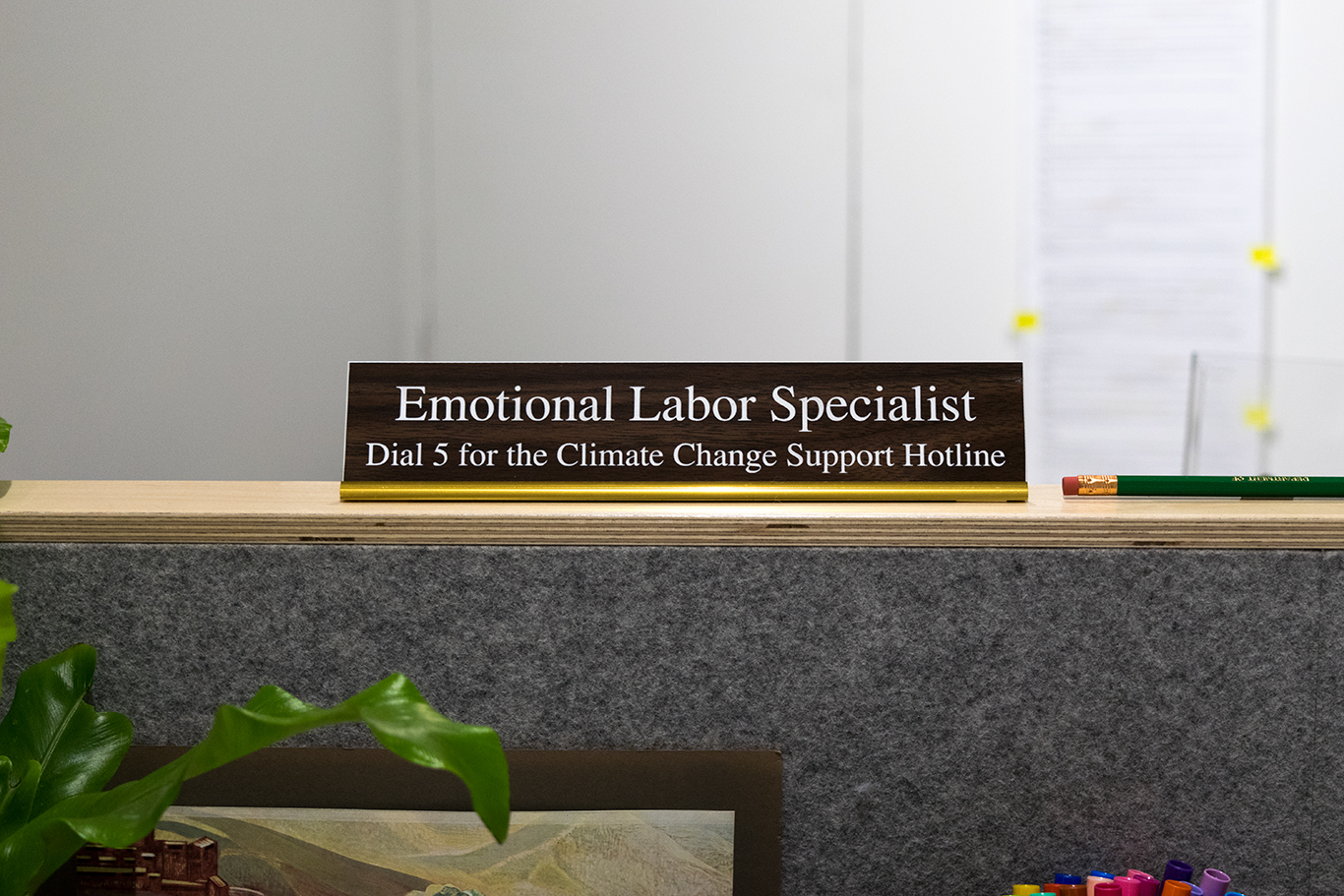
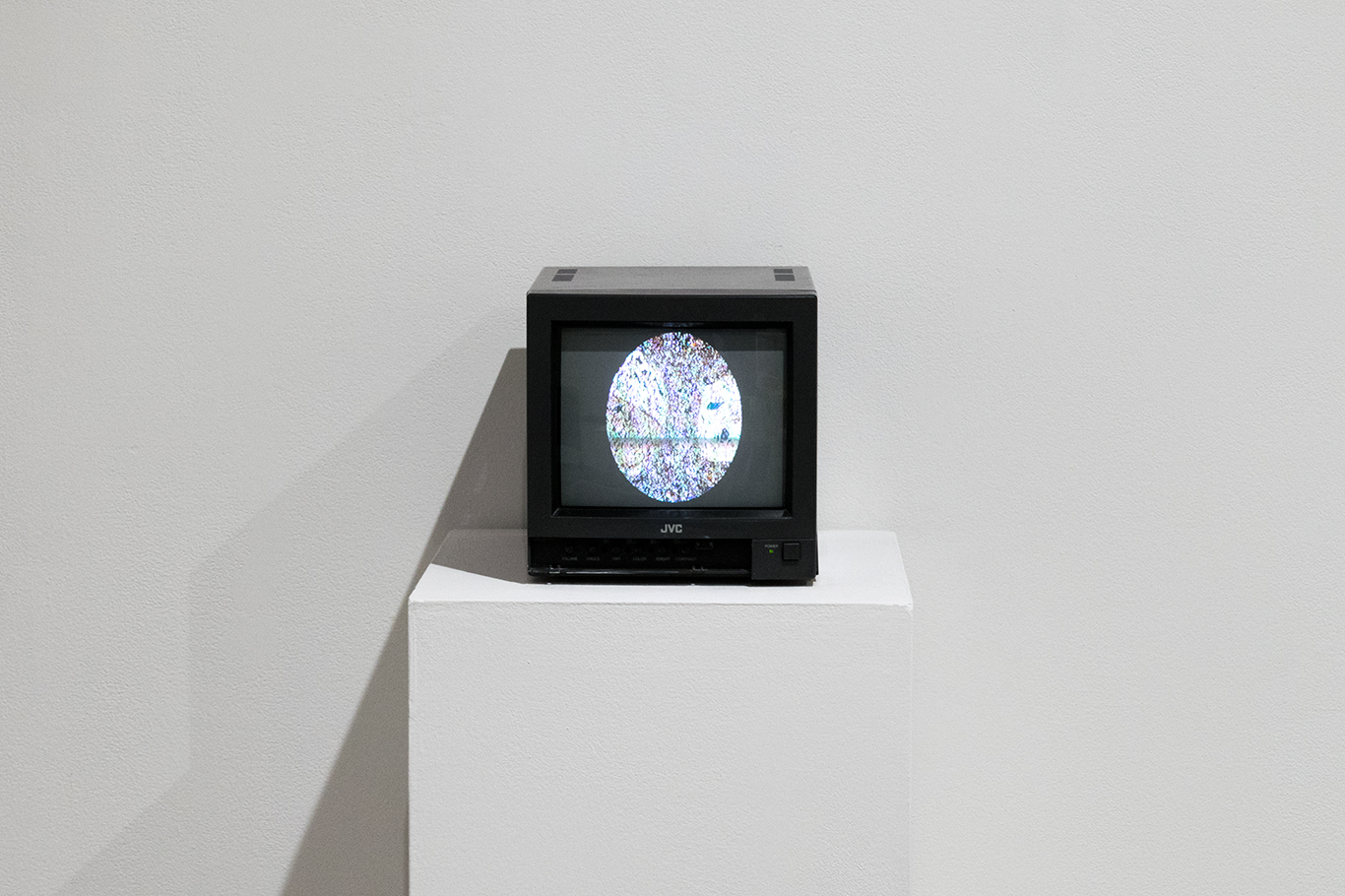


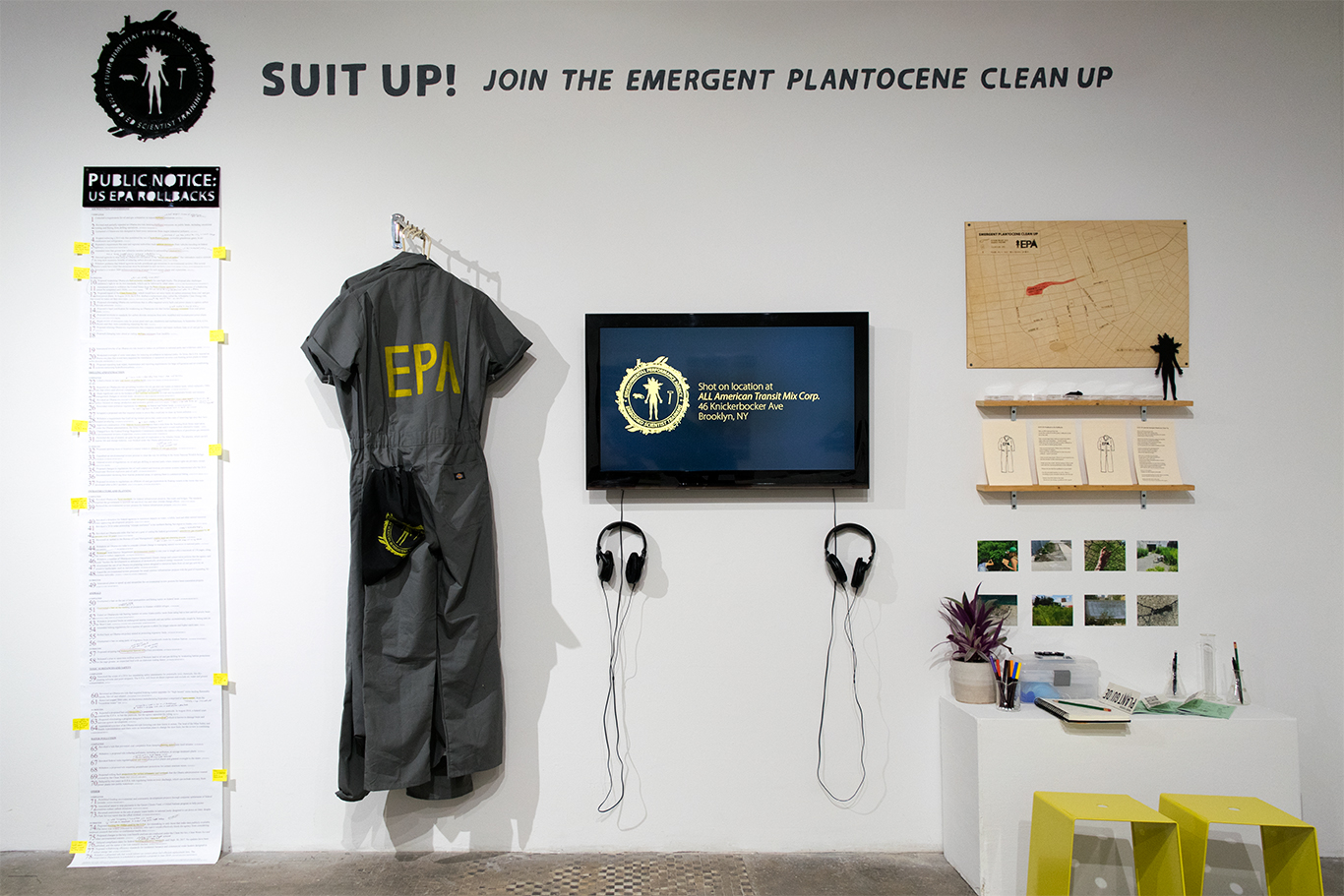
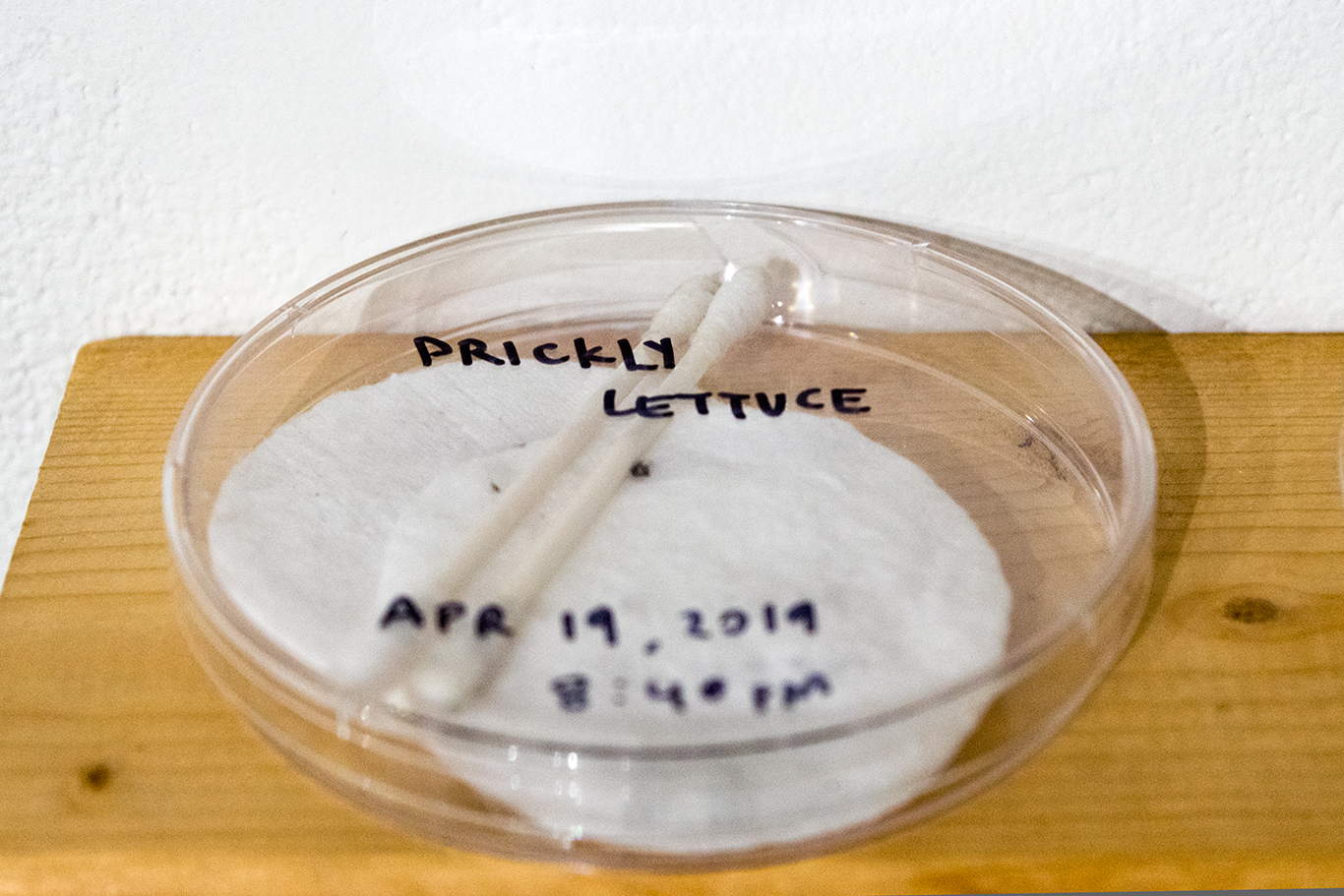
Exhibition at NURTUREart
56 Bogart Street, Brooklyn, NY
Role: Curator
April 20-May 19, 2019
Opening Reception: April 19, 7-9PM
The Department of Human and Natural Services, a group show curated by Mariel Villeré and featuring artists Nancy Nowacek, Allison Rowe, Li Sumpter, and the Environmental Performance Agency (EPA): Catherine Grau, andrea haenggi, Ellie Irons, and Christopher Kennedy, exhibits alternative arrangements of the bureaucracy surrounding climate change and possibilities to reclaim agency for environmental justice and resilience.
Transforming the gallery into a site for performance and as a departure point for collaborative production, The Department of Human and Natural Services aims to foster trust, experimentation, and open dialogue. The exhibition puts forward the role of artists in activism and proposes creative strategies in response to the current course of global warming and its myriad effects on environmental, political, and emotional levels. If the multiscalar and multirelational “disconnect” is the primary contributor to the ecological crisis and its denial, as suggested by philosopher Bruno Latour, artists in the exhibition deal inherently with connection—between humans, between humans and other species (plant and animal), and between disciplinary methodologies—as a gesture towards reparation and repair. Rather than in the artist’s studio, most of this work is done directly in communities, making face-to-face connections to address immediate human needs, to collaboratively imagine a better or sustained future, and to mobilize. The Department’s office is therefore a repository, a stopover, and a meeting place.
Of the many artists and creative activists addressing today’s climate emergency, those represented here expand contemporary discourse on the anthropocene, posthuman, nonhuman, and more-than-human. The EPA positions plants, specifically weeds, as sentient beings and agents for epistemological revolution; the group invites visitors to collect data, co-produce ecological knowledge, and think more holistically about and foster care for the living things affected by climate change. Through direct engagement and collaborative performance, the choreographer and visual and performing artists that comprise the EPA prompt viewers and participants to shift away from an anthropocentric worldview, encouraging a thoughtful consideration of interspecies ethics. Data, findings, and speculative thinking resulting from their Embodied Scientist Training will be recorded over the course of the exhibition on the suits visitors are invited to wear for the Emergent Plantocene Clean-Up.
Li Sumpter situates humans within the cosmic scale and writes myths and science fiction as a world-building (or rebuilding) practice to work through systemic societal problems such as economic inequality and racial injustice. Sumpter’s Boom 4 Real Escape Pods compose a survival kit for mythological and real-to-life emergencies, Graffiti in the Grass promotes creative resistance and community readiness across narrative platforms, and the Oracle Box collects impressions and aspirations.
Over the course of planning and designing her project Citizen Bridge, a participatory, collective infrastructure project to realize a pedestrian crossing over Buttermilk Channel between Brooklyn and Governors Island, Nancy Nowacek has developed a discursive project. Citizen Bridge addresses sea level rise, resistance, reclaiming the waterways as public space, and creating bridges between people and communities. The Department displays the conference calls made, measurements taken, calendars followed, agreements signed, and business cards collected since 2012, all activities that continue and together demonstrate the networks and layers of an artist’s labor by way of visual ephemera.
Allison Rowe is connected to the Department by way of telephone, offering visitors an ear to listen to their hopes and fears as well as share the knowledge she has gained through her ongoing project Trying to Talk to Climate Change Researchers About the Future and their Feelings. Visitors are invited to draw in response to their conversation with Allison and leave their work as part of the exhibition files. Rowe, however, may not always be available, therefore placing visitors on an “emotional hold,” and weaving concepts of feminism, labor, and caretaking into the environmental crisis. Additionally, Rowe’s Geologic Time visualizes the literal reshaping of the earth’s geology by human impact over the past 8,000 years. Together, the exhibiting artists respond to and infiltrate conventional systems by way of their process-based aesthetic projects to catalyze change.
Staged as a government office with records and artifacts of past investigative work as well as survival kits and tools for citizen science and expanded communication, the exhibition suggests nontraditional workspaces for hybrid and innovative practices. Perhaps the traditional office is no longer of service for the reconfigured conditions we face, for challenges so enormous. In demonstrating the range of work that artists take on, sometimes resembling scientific research, interpretation, and even administrative work, the exhibition puts forth the potential of artists to influence governance and policy making within existing structures. Artists are increasingly being embedded in schools and even bureaucratic spaces. What might we be able to achieve if we moved the cubicle from the office to the expanded field? Rather than look away or sink into melancholy, artists in The Department of Human and Natural Services encourage us to see, hear, and feel in order to think clearly and act swiftly on an individual level, which when aggregated, could in fact shift the course and stabilize our planetary home.
Public Programs
EPA Embodied Scientist Training, Suit Up: Join the Emergent Plantocene Clean-Up
Saturday May 4, 2–3:30 PM
EPA Embodied Scientist Training is a call to participate in a multispecies coalition of embodied scientists, activists, and spontaneous plants who are re-imagining federal policy and agency in the face of imminent climate crises and mass extinction. In response to the U.S. Environmental Protection Agency’s unprecedented rollback of 75+ federal environmental rules and regulations, the EPA Embodied Scientist Training is a call to intimate action! Suit up and embark on a DIY fieldwork training in the heart of Bushwick. Data, findings, and speculative thinking resulting from the public’s participation will be recorded on the suits themselves over the course of the exhibition. Following the training, artists will lead a discussion and reflection with participants. The workshop with depart from NURTUREart and take place outside in the streets, bringing people into a close up experience with spontaneous urban plants. No experience necessary; all bodies welcome!
Guest Program: The Collaborative Urban Resilience Banquet, Spring 2019 Edition
Community Walk and Foraged Meal
Sunday May 5 and Sunday May 12, meet at NURTUREart at 3:30 PM
Space is limited, please RSVP here
This second iteration of The C.U.R.B. is a roving picnic through East Williamsburg in which guests will participate in various acts of environmental remediation and stewardship, followed by a meal of experimental tamales and wild brews foraged (almost entirely) from the city streets. Learn how Mugwort, Mulberries, Amaranth, Pigeons, and more came to be our neighbors, and what they can teach us about surviving and thriving in the midst of our own hot mess. Through citizen science and storytelling, Banquet host Candace Thompson seeks to render visible our fragile food web in the era of manmade climate change, explore our historically complicated relationship(s) to land, and imagine alternative forms of economy and ecology that are regenerative and resilient rather than exploitative and extractive. NOTE: this event will be video documented, and some of the food items are slightly contaminated due to human activity. As such, the meal is not suitable for young children, and individuals who are, or are planning to become, pregnant should use some caution.
Mariel Villeré researches, writes, and organizes exhibitions and cultural programming at the intersection of architecture, art, landscape, and the city. Her practice engages complex issues in urban and natural environments and encourages a wide public to think critically by way of collaborative, open-ended, and pedagogical approaches to display and demonstration. Currently the Manager for Programs, Arts, and Grants at Freshkills Park/NYC Parks, Mariel is building the integrated art program for the 2,200-acre landfill-to-park site on Staten Island through an open proposal process, an inquiry-based artist residency program, Field R/D, and through the on-site Studio+Gallery she founded in January 2018.
Allison Rowe is a Canadian interdisciplinary artist, educator, and researcher. Her artistic work attempts to re-personalize political discourses, exploring the possibilities that exist in this transitional process. Allison is a doctoral candidate in Art Education at the University of Illinois at Urbana-Champaign where she is researching socially engaged art.
Nancy Nowacek makes art engaged with the power and politics of the body in a late-capital, post-industrial, changing climate. Her interests focus on the design of digital technologies and the built environment, the regulation of the natural environment, and the forms of behavior and choreography embedded within.
Li Sumpter, Ph.D. is a mythologist, educator, and social practice artist who employs mythic literacy and eco-conscious design as modes of creative resistance and community empowerment. Her academic work and socially engaged art projects synergize world building, afrofuturism, environmental justice, and land sovereignty as a praxis of freedom. Li is Founder/Creative Director of MythMedia Studios, an art and design studio that employs myth, media, and liberation technologies to address existential concerns and environmental issues
The Environmental Performance Agency (EPA) is an artist collective founded in 2017 and named in response to the ongoing rollback of Federal environmental policy at the U.S. Environmental Protection Agency. Appropriating the acronym EPA, the collective’s primary goal is to shift thinking around the terms environment, performance, and agency—using artistic, social, and embodied practices to advocate for the agency of all living performers co-creating our environment, specifically through the lens of spontaneous urban plants, native or migrant. Current EPA Agents include Catherine Grau, andrea haenggi, Ellie Irons, Christopher Kennedy, and spontaneous urban plants.
|